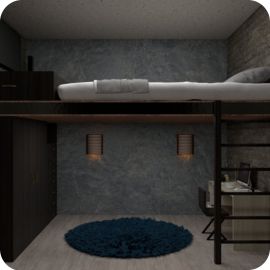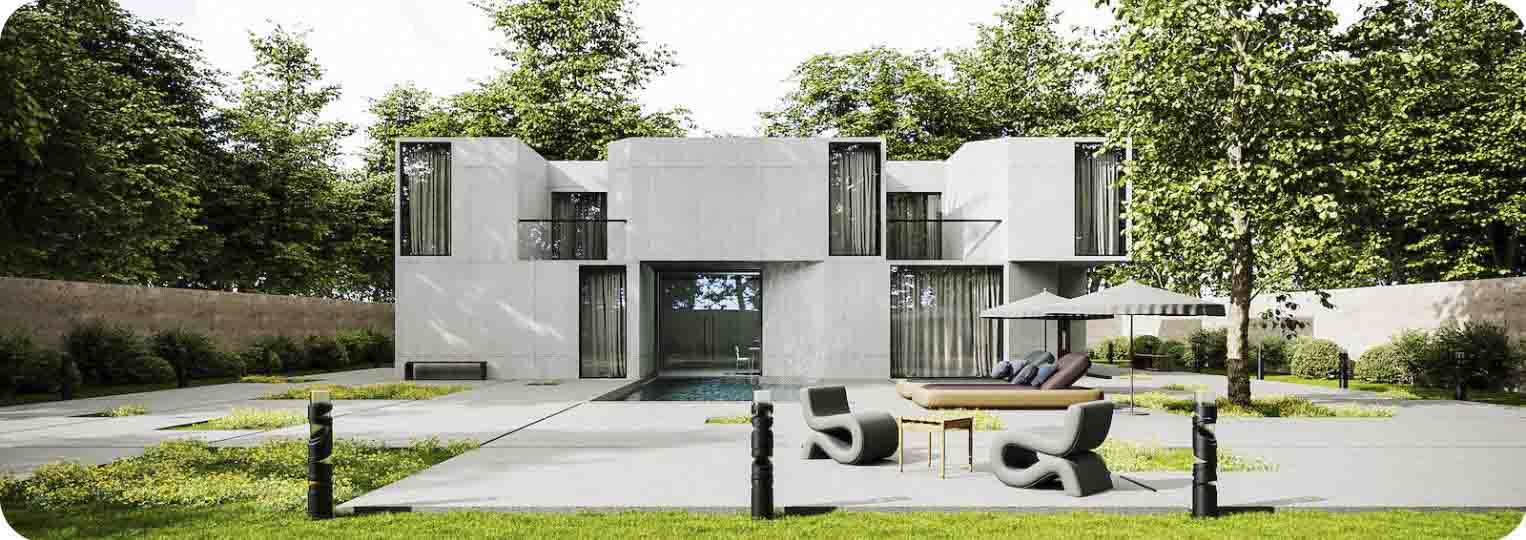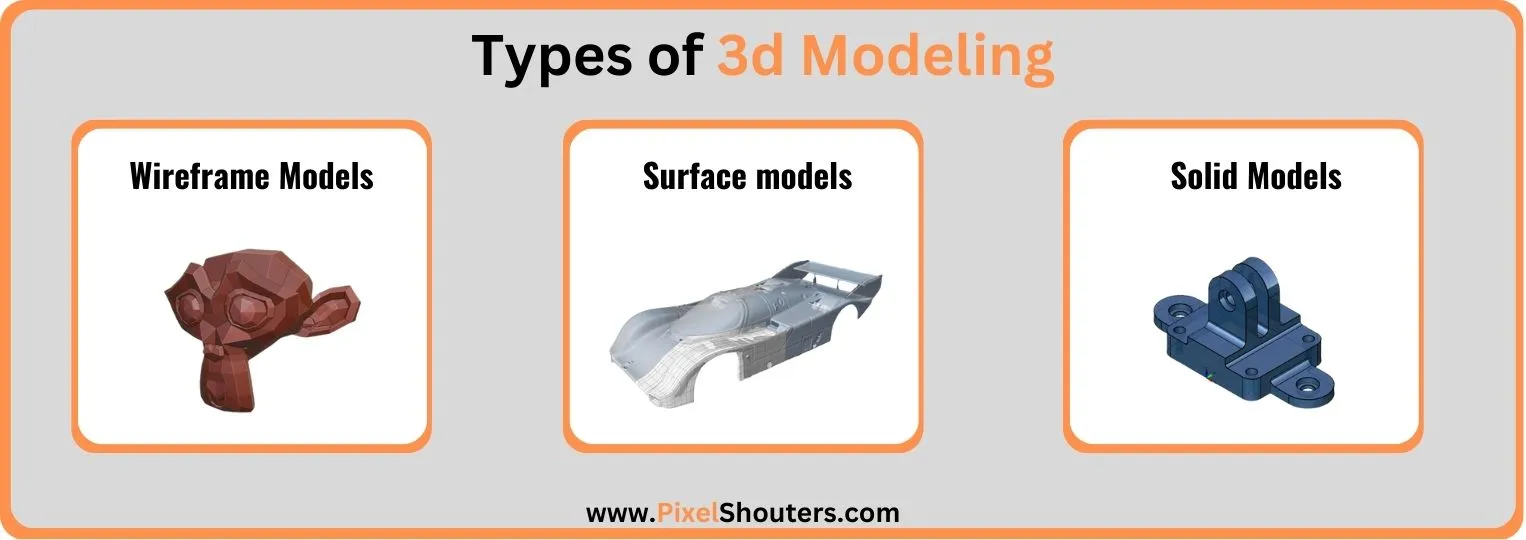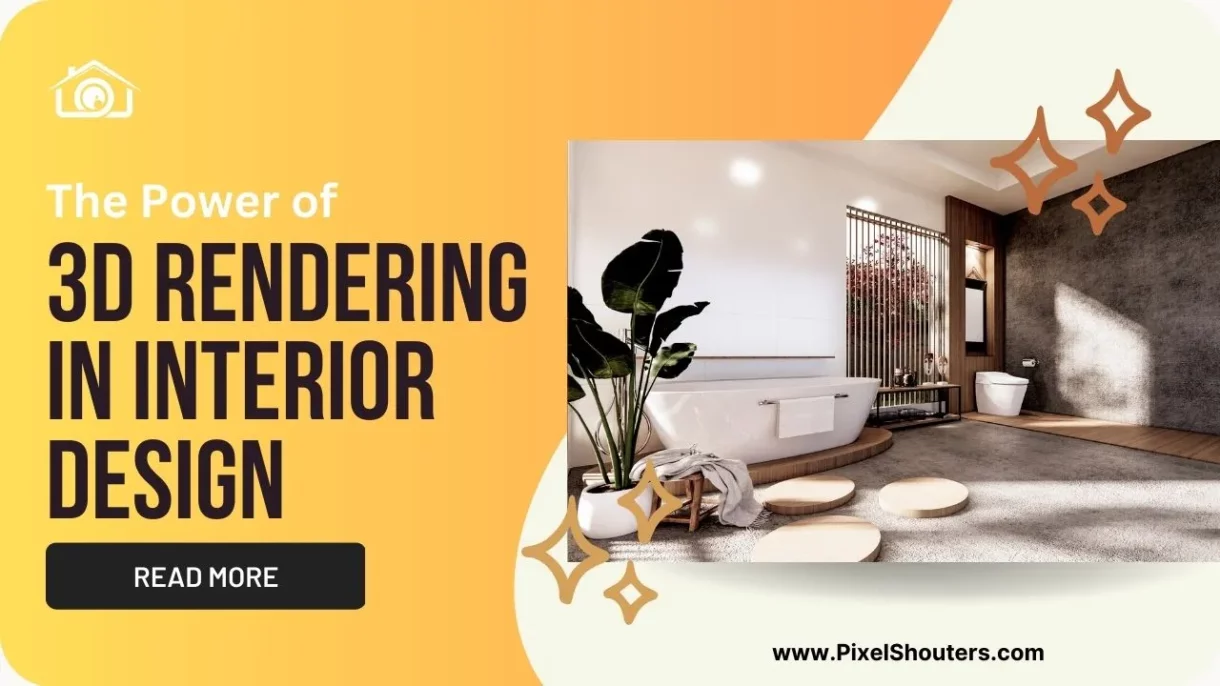The Power of 3D Rendering in Interior Design
As the world continues to rely more and more on technology, industries such as interior design are following suit. One of the most significant technological advancements is 3D rendering in interior design industry. Making a 2D image or animation from a 3D model is called 3D rendering. It has quickly become an indispensable tool in the field of interior design, allowing designers and clients to visualize spaces before any physical work begins. In this article, we will explore what 3D rendering in interior design is, why it is essential, the different types of 3D rendering, its uses, benefits, and the various types of 3D models.
Table of Contents
What is a 3D Rendering Called?
In the interior design industry, 3D rendering is often referred to as computer-generated images (CGIs), visualizations, and fly-throughs. These terms are used interchangeably to describe the process of creating a realistic, 2D image or animation of a 3D model.
What is 3D Rendering in Interior Design?
3D rendering in interior design is the process of creating a realistic, 2D image or animation of a 3D model of a space. The process involves using computer software to generate a visual representation of a space based on a designer’s specifications. By using 3D rendering, designers can create a realistic, 3D model of a room, building, or entire property.

Why is 3D Rendering in Interior Design Important?
One of the biggest advantages of 3D rendering in interior design is that it allows designers and clients to visualize and make changes to a design before any physical work begins. With 3D rendering, designers can create detailed, photorealistic images that show exactly how a space will look when completed. Clients can see their ideas come to life, make changes to the design, and see how those changes affect the overall look and feel of the space. This process can save time, money, and potential headaches during the construction phase.
Types of 3D Rendering
There are two types of 3D rendering: real-time rendering and offline rendering.
Real-Time Rendering
Real-time rendering is the process of generating 3D images in real-time. Real-time rendering is used for applications such as video games, where graphics need to be generated quickly to keep up with the player’s movements.
Offline Rendering
Offline rendering is the process of creating 3D images over a more extended period. Offline rendering is used in the interior design industry because it allows designers to create photorealistic images that take time to render.

Uses of 3D Rendering
3D rendering has numerous uses in the interior design industry, including:
A. Visualization of Designs:
3D rendering is a valuable tool for visualizing and exploring design concepts. It allows designers to create accurate and detailed 3D models of their designs, which can be viewed from any angle or perspective. This helps designers and clients to better understand and visualize the final product before any physical work begins. With 3D rendering, designers can make adjustments and changes to the design before construction, saving time and money.
B. Marketing and Sales:
In the interior design industry, marketing and sales play a critical role in showcasing the properties to potential clients. 3D rendering provides photorealistic images and animations of spaces, which can be used in marketing materials to showcase the properties to potential buyers or renters. This allows them to visualize the property and make informed decisions before making any commitments.
C. Collaboration and Communication:
3D rendering is also a valuable asset for collaboration and communication in the interior design industry. It allows designers, contractors, and clients to collaborate and communicate more effectively by providing a clear and accurate visual representation of the design. This improves communication and reduces the risk of misunderstandings, leading to better decision-making and more efficient project completion.
Overall, 3D rendering is a valuable tool in the interior design industry, providing improved visualization, communication, and decision-making. Its uses range from visualizing designs to marketing and sales to collaboration and communication, making it an essential asset in the industry.
Benefits of 3D Rendering
The use of 3D rendering in interior design has several benefits, including:
Accuracy and precision:
3D rendering allows designers to create accurate, precise models of spaces that can be used for construction and remodeling projects.
Time and cost savings:
By visualizing designs before construction begins, 3D rendering can save time and money by avoiding mistakes and design changes during the construction process.
Improved communication and decision-making:
3D rendering allows clients and designers to communicate more effectively, making it easier to make decisions and changes to a project.

Types of 3D Models
There are three types of 3D models: wireframe models, surface models, and solid models.
A. Wireframe models:
Wireframe models are the most basic type of 3D models. They consist of lines and points that define the edges and vertices of a 3D object, with no internal surfaces or textures. They are often used as the first step in creating 3D models, as they provide a basic outline for the model’s shape.
B. Surface models:
Surface models are more advanced than wireframe models, as they define the outer surface of a 3D object using mathematical equations. These models are more detailed and accurate than wireframe models, but still do not have a defined interior. Surface models are often used in industrial design, architecture, and automotive design.
C. Solid models:
Solid models are the most advanced type of 3D models. They define the entire volume of a 3D object, including its interior, using a combination of surfaces and mathematical equations. Solid models are highly detailed and accurate, making them ideal for engineering, product design, and animation. They are also used for rapid prototyping and 3D printing.
Full 3D Rendering
Full 3D rendering is the process of creating a complete, photorealistic image or animation of a space. It involves creating a detailed 3D model, adding textures, lighting, and other elements to create a realistic image.
Full 3D rendering is often used in the interior design industry to showcase properties in marketing materials and to help clients visualize the final product. It can also be used in construction and remodeling projects to help contractors and workers understand the design and construction details.
How PixelShouters Rendering team can help you
PixelShouters is a company that specializes in real estate photo editing services and 3D rendering services for real estate and interior design industries. With their expertise in 3D rendering, they can help clients visualize their designs with photorealistic 3D models and animations. PixelShouters can also help with the marketing and sales process by creating stunning images and videos that showcase the properties to potential buyers or renters.
Moreover, PixelShouters can provide collaboration and communication support by providing 3D models that help designers, contractors, and clients understand the design and construction details more clearly. PixelShouters’ team of experts can work closely with clients to ensure that their 3D rendering needs are met and that their vision is accurately portrayed. With PixelShouters’ 3D rendering services, clients can save time, money, and resources by visualizing and adjusting their designs before any physical work begins.

Conclusion
In conclusion, 3D rendering is an essential tool in the field of interior design. It allows designers and clients to visualize spaces before any physical work begins, saving time, money, and potential headaches during the construction phase. 3D rendering has numerous uses in the industry, including visualization of designs, marketing and sales, and collaboration and communication.
There are two types of 3D rendering: real-time rendering and offline rendering, and three types of 3D models: wireframe models, surface models, and solid models. Full 3D rendering is the process of creating a complete, photorealistic image or animation of a space.
Overall, 3D rendering is a valuable asset in the interior design industry, providing accuracy, precision, and improved communication and decision-making. With the continued development of technology, 3D rendering is sure to become even more advanced, changing the way we design and visualize spaces in the future.
